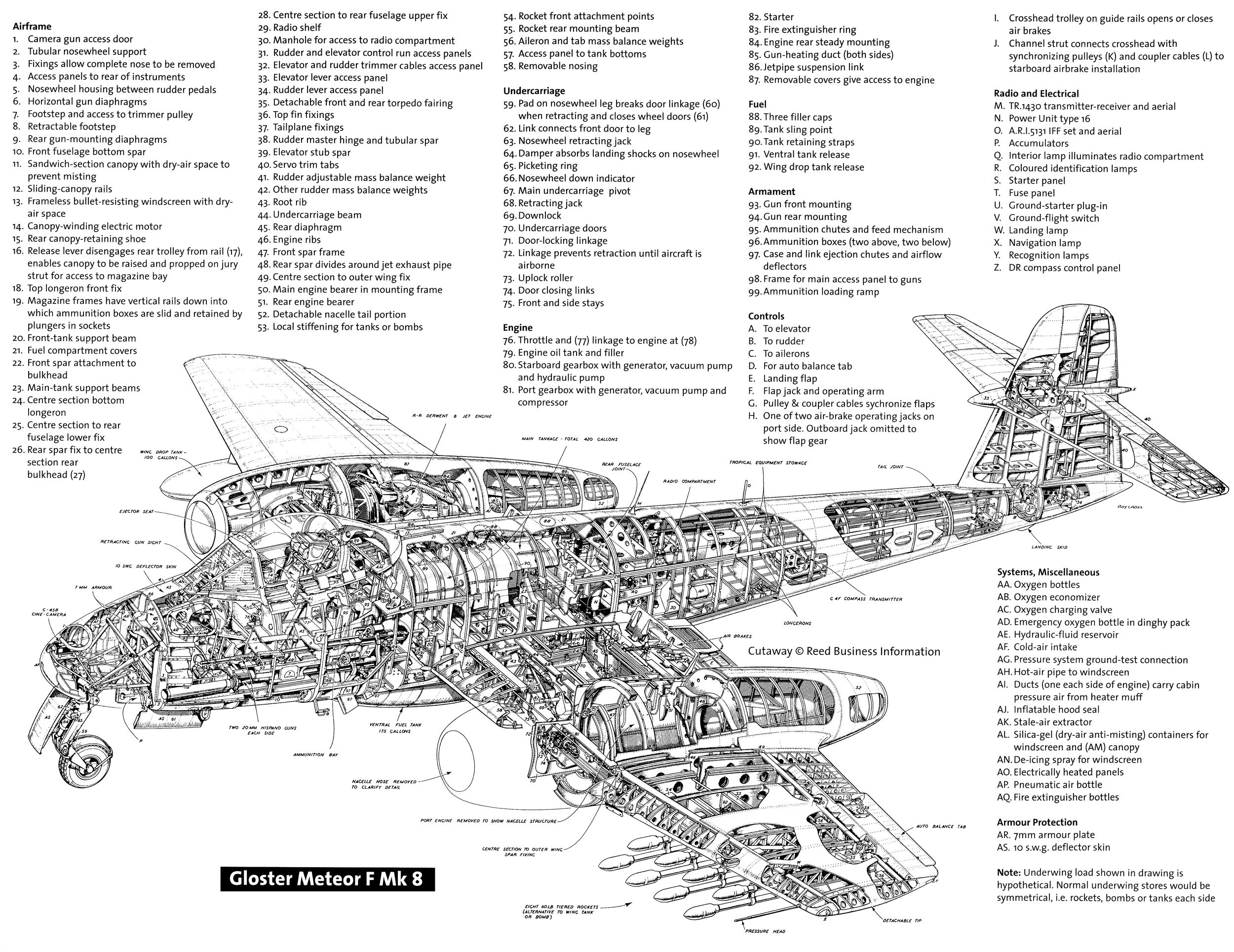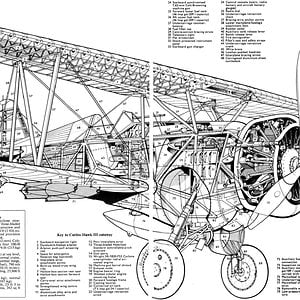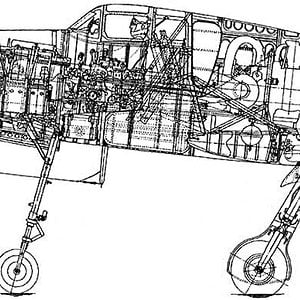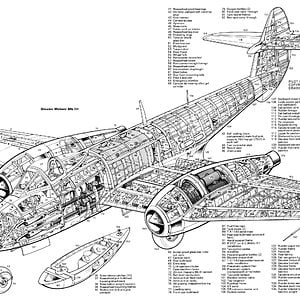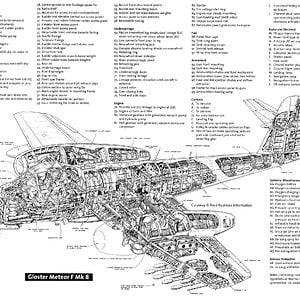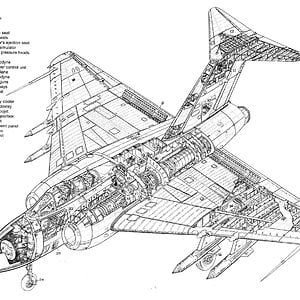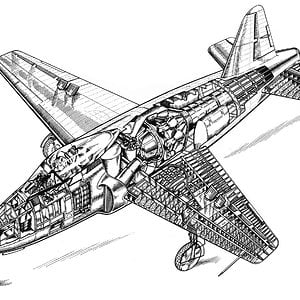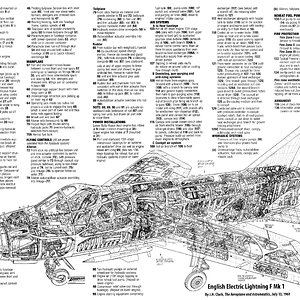Navigation
Install the app
How to install the app on iOS
Follow along with the video below to see how to install our site as a web app on your home screen.
Note: This feature may not be available in some browsers.
More options
You are using an out of date browser. It may not display this or other websites correctly.
You should upgrade or use an alternative browser.
You should upgrade or use an alternative browser.
Variants
Gloster F.9/40 Prototypes, eight built - DG202/G powered by two Rover W2B jet engines, first flown 24 July 1943.
DG203/G powered by two Power Jets W2/500 engines, first flown 9 November 1943.
DG204/G powered by two Metrovik F2 axial jet engines, unlike the other F.9/40s the engines were mounted under the wing, first flown 13 November 1943.
DG205/G powered by two Rover W2B/23 jet engines, first flown 12 June 1943.
DG206/G powered by two Halford H1 jet engines, the first to fly on 5 March 1943.
DG207/G powered by two Halford H1 jet engines, first flown 24 July 1945, became the prototype F.2 variant.
DG208/G powered by two Rover W2B/23 engines, first flown 20 January 1944.
DG209/G powered by two Rover W2B/27 engines, first flown 18 April 1944.
Meteor F.1 First production aircraft built between 1943 and 1944, 20 built. Meteor F.1, Trent turboprop
The sole Trent Meteor One-off engine test bed, built 1945, designated EE227, for the new and highly successful Rolls-Royce Trent turboprop engine making it the world's first turboprop-powered aircraft. Meteor F.2 Alternative engined version – only one built. Meteor F.3 Derwent I powered with sliding canopy, first flown 11 September 1944, 210 built (first 15 were Welland-powered)
F.4, previously used by the Argentinian Air Force. Meteor F.4 Derwent 5 powered with strengthened fuselage, 489 built by Glosters and 46 by Armstrong Whitworth for the Royal Air Force. The F.4 was also exported to Argentina (50 aircraft), Belgium (48 aircraft), Denmark (20 aircraft), Egypt (12 aircraft), Netherlands (38 aircraft). Meteor FR.5 One-off fighter reconnaissance version of the F.4, fitted with vertical cameras in the nose instead of the four cannon and had obliques cameras in the fuselage, destroyed on maiden flight 15 June 1949. Meteor F.6 Proposed swept-wing variant of the F.4, not built. Meteor T.7 Two-seat trainer variant of the F.4, company prototype first flew 19 March 1948, 640 production aircraft for the Royal Air Force and the Royal Navy (43) and 72 for export (Belgium, Brazil, Denmark, Egypt, France, Israel, Netherlands). Avions Fairey modified 20 Belgian Air Force F.4s to T.7 standard.
A77-871 (WK791) F.8, used by the Royal Australian Air Force Meteor F.8 Greatly improved from the F.4. Longer fuselage, greater fuel capacity, standard ejection seat and modified tail (derived from the E.1/44). This variant was a prolific frontline fighter in RAF squadron service, 1950–54. Meteor F.8 Prone Pilot One-off experimental prone pilot F.8, WK935 modified by Armstrong Whitworth.[63]
The sole "prone pilot" experimental testbed. Meteor FR.9 Fighter armed reconnaissance version of the F.8, first flown 23 March 1950, 126 built by Glosters for the Royal Air Force. Former RAF aircraft were later sold to Ecuador, Israel and Syria. Meteor PR.10 Photo reconnaissance version of the F.8, first flown 29 March 1950, 59 built for the Royal Air Force. Meteor NF.11 Night Fighter variant with Airborne Interception (AI) radar designed and built by Armstrong Whitworth, three prototypes followed by 311 production aircraft for the Royal Air Force and 20 for the Royal Danish Air Force. Meteor NF.12 Longer nosed version of the NF.11 with American AN/APS-21 radar, this was balanced by a slightly larger fin, first flown on 21 April 1953, 100 built by Armstrong Whitworth. Meteor NF.13 Tropicalised version of the NF.11 to replace the Mosquito NF.36 for service with 39 Squadron in Malta and Cyprus and 219 Squadron based in Egypt. The first of 40 production aircraft built by Armstrong Whitworth was first flown on 21 December 1952. Former Royal Air Force aircraft were later sold to Egypt (6 aircraft), France (2 aircraft), Israel (6 aircraft) and Syria (6 aircraft). Meteor NF.14 NF.11 with new two-piece blown canopy rather than the heavy-framed version. It also had a longer nose giving a length of 51 ft 4 in. Protoype modified from an NF.11 was first flown 23 October 1953 and was followed by 100 production aircraft built by Armstrong Whitworth for the Royal Air Force. Meteor U.15 Target drone conversion of the F.4, 92 modified by Flight Refuelling Ltd.[64] Meteor U.16 Target drone conversion of the F.8, 108 modified by Flight Refuelling.[64] Meteor TT.20 High speed target towing conversion of the NF.11 for the Royal Navy by Armstrong Whitworth, 20 former Royal Air Force NF.11s were modified. Four additional conversions of four NF.11s of Royal Danish Air Force, after conversion these were flown by civil operators on behalf of the Danish military.[65] Meteor U.21 Target drone conversion of the F.8 for the Royal Australian Air Force by Flight Refuelling, some aircraft modified in Australia by Fairey Aviation of Australasia using Flight Refueling supplied modification kits.[64] Ground Attack Fighter Also known as the Reaper, it was a F.8 modified by Gloster as a private venture ground attack fighter. The modification allowed the carriage of external Rocket-Assisted Take-Off Gear (RATOG), added a ventral cannon and tip tanks. First flown 4 September 1950, only one was built.[66]
Gloster F.9/40 Prototypes, eight built - DG202/G powered by two Rover W2B jet engines, first flown 24 July 1943.
DG203/G powered by two Power Jets W2/500 engines, first flown 9 November 1943.
DG204/G powered by two Metrovik F2 axial jet engines, unlike the other F.9/40s the engines were mounted under the wing, first flown 13 November 1943.
DG205/G powered by two Rover W2B/23 jet engines, first flown 12 June 1943.
DG206/G powered by two Halford H1 jet engines, the first to fly on 5 March 1943.
DG207/G powered by two Halford H1 jet engines, first flown 24 July 1945, became the prototype F.2 variant.
DG208/G powered by two Rover W2B/23 engines, first flown 20 January 1944.
DG209/G powered by two Rover W2B/27 engines, first flown 18 April 1944.
Meteor F.1 First production aircraft built between 1943 and 1944, 20 built. Meteor F.1, Trent turboprop
The sole Trent Meteor One-off engine test bed, built 1945, designated EE227, for the new and highly successful Rolls-Royce Trent turboprop engine making it the world's first turboprop-powered aircraft. Meteor F.2 Alternative engined version – only one built. Meteor F.3 Derwent I powered with sliding canopy, first flown 11 September 1944, 210 built (first 15 were Welland-powered)
F.4, previously used by the Argentinian Air Force. Meteor F.4 Derwent 5 powered with strengthened fuselage, 489 built by Glosters and 46 by Armstrong Whitworth for the Royal Air Force. The F.4 was also exported to Argentina (50 aircraft), Belgium (48 aircraft), Denmark (20 aircraft), Egypt (12 aircraft), Netherlands (38 aircraft). Meteor FR.5 One-off fighter reconnaissance version of the F.4, fitted with vertical cameras in the nose instead of the four cannon and had obliques cameras in the fuselage, destroyed on maiden flight 15 June 1949. Meteor F.6 Proposed swept-wing variant of the F.4, not built. Meteor T.7 Two-seat trainer variant of the F.4, company prototype first flew 19 March 1948, 640 production aircraft for the Royal Air Force and the Royal Navy (43) and 72 for export (Belgium, Brazil, Denmark, Egypt, France, Israel, Netherlands). Avions Fairey modified 20 Belgian Air Force F.4s to T.7 standard.
A77-871 (WK791) F.8, used by the Royal Australian Air Force Meteor F.8 Greatly improved from the F.4. Longer fuselage, greater fuel capacity, standard ejection seat and modified tail (derived from the E.1/44). This variant was a prolific frontline fighter in RAF squadron service, 1950–54. Meteor F.8 Prone Pilot One-off experimental prone pilot F.8, WK935 modified by Armstrong Whitworth.[63]
The sole "prone pilot" experimental testbed. Meteor FR.9 Fighter armed reconnaissance version of the F.8, first flown 23 March 1950, 126 built by Glosters for the Royal Air Force. Former RAF aircraft were later sold to Ecuador, Israel and Syria. Meteor PR.10 Photo reconnaissance version of the F.8, first flown 29 March 1950, 59 built for the Royal Air Force. Meteor NF.11 Night Fighter variant with Airborne Interception (AI) radar designed and built by Armstrong Whitworth, three prototypes followed by 311 production aircraft for the Royal Air Force and 20 for the Royal Danish Air Force. Meteor NF.12 Longer nosed version of the NF.11 with American AN/APS-21 radar, this was balanced by a slightly larger fin, first flown on 21 April 1953, 100 built by Armstrong Whitworth. Meteor NF.13 Tropicalised version of the NF.11 to replace the Mosquito NF.36 for service with 39 Squadron in Malta and Cyprus and 219 Squadron based in Egypt. The first of 40 production aircraft built by Armstrong Whitworth was first flown on 21 December 1952. Former Royal Air Force aircraft were later sold to Egypt (6 aircraft), France (2 aircraft), Israel (6 aircraft) and Syria (6 aircraft). Meteor NF.14 NF.11 with new two-piece blown canopy rather than the heavy-framed version. It also had a longer nose giving a length of 51 ft 4 in. Protoype modified from an NF.11 was first flown 23 October 1953 and was followed by 100 production aircraft built by Armstrong Whitworth for the Royal Air Force. Meteor U.15 Target drone conversion of the F.4, 92 modified by Flight Refuelling Ltd.[64] Meteor U.16 Target drone conversion of the F.8, 108 modified by Flight Refuelling.[64] Meteor TT.20 High speed target towing conversion of the NF.11 for the Royal Navy by Armstrong Whitworth, 20 former Royal Air Force NF.11s were modified. Four additional conversions of four NF.11s of Royal Danish Air Force, after conversion these were flown by civil operators on behalf of the Danish military.[65] Meteor U.21 Target drone conversion of the F.8 for the Royal Australian Air Force by Flight Refuelling, some aircraft modified in Australia by Fairey Aviation of Australasia using Flight Refueling supplied modification kits.[64] Ground Attack Fighter Also known as the Reaper, it was a F.8 modified by Gloster as a private venture ground attack fighter. The modification allowed the carriage of external Rocket-Assisted Take-Off Gear (RATOG), added a ventral cannon and tip tanks. First flown 4 September 1950, only one was built.[66]

